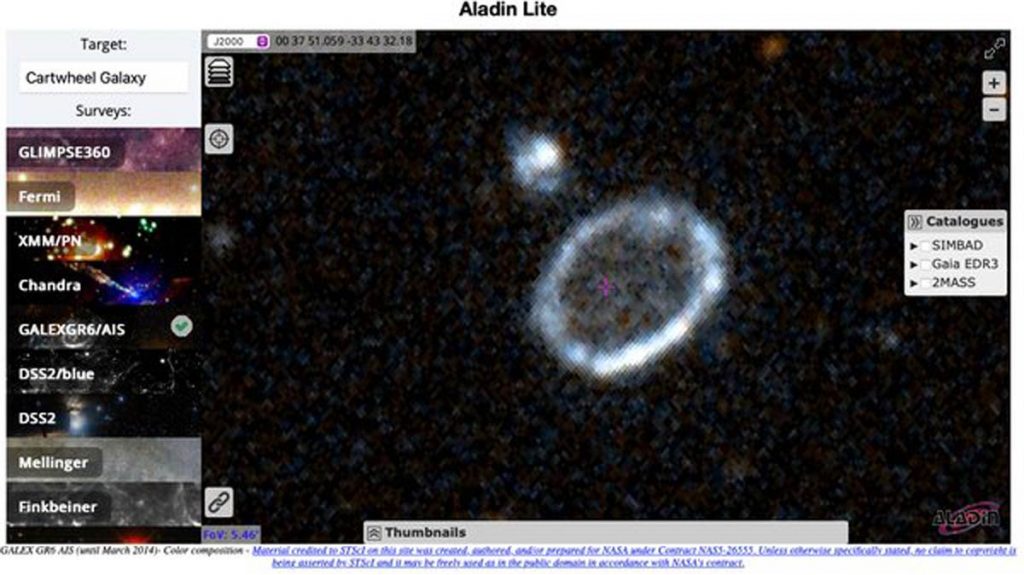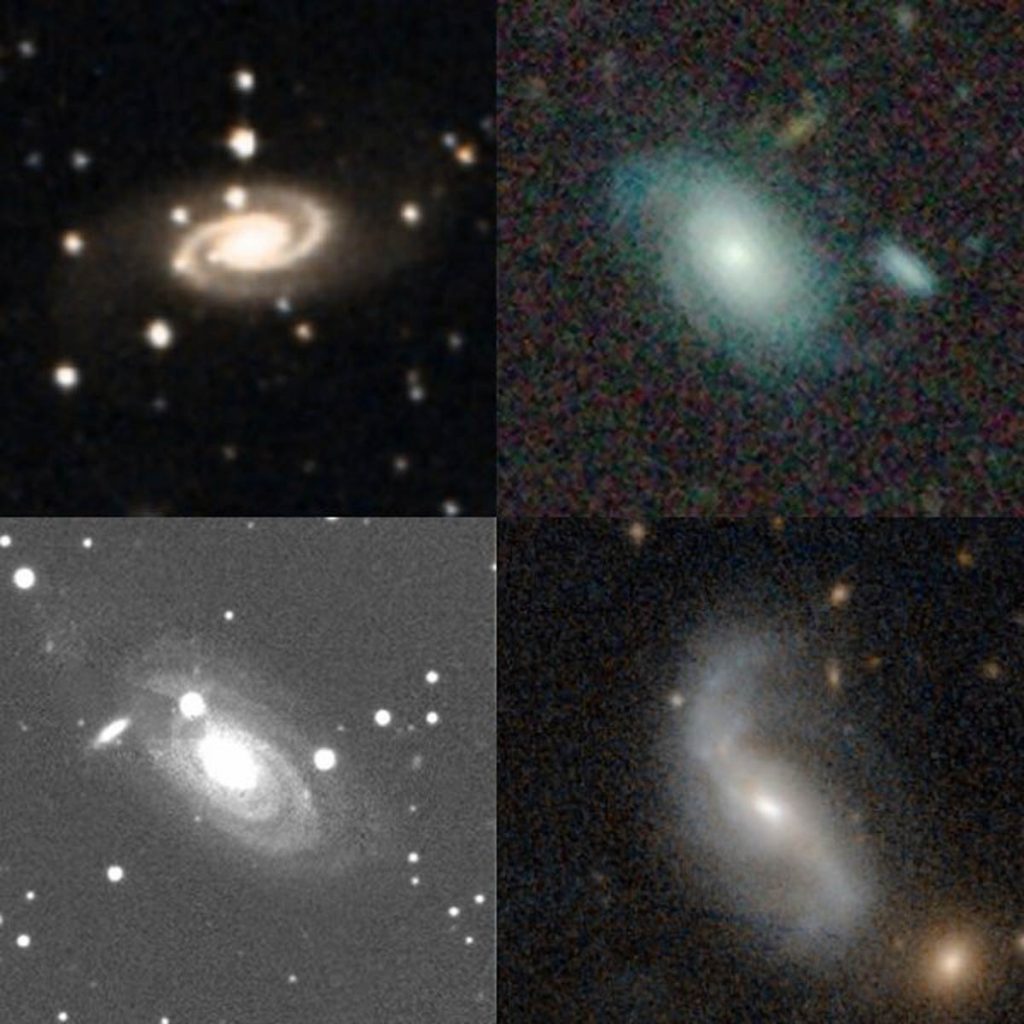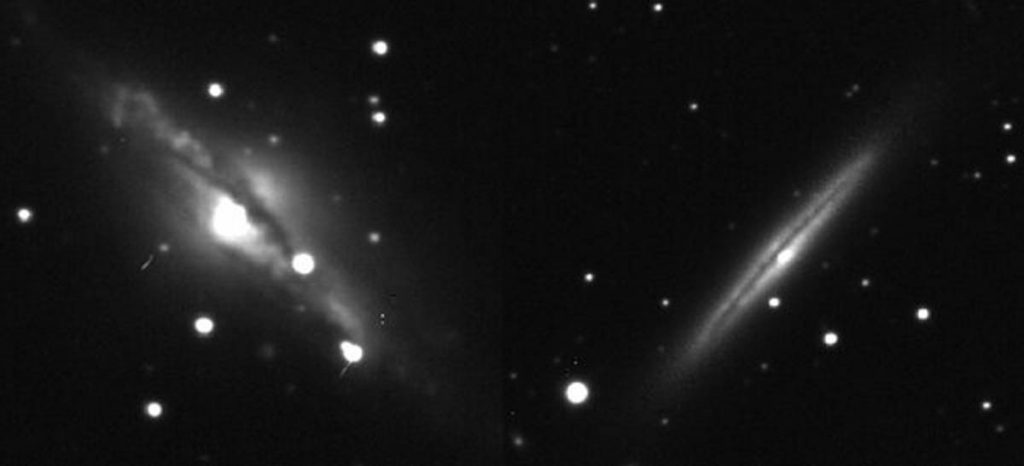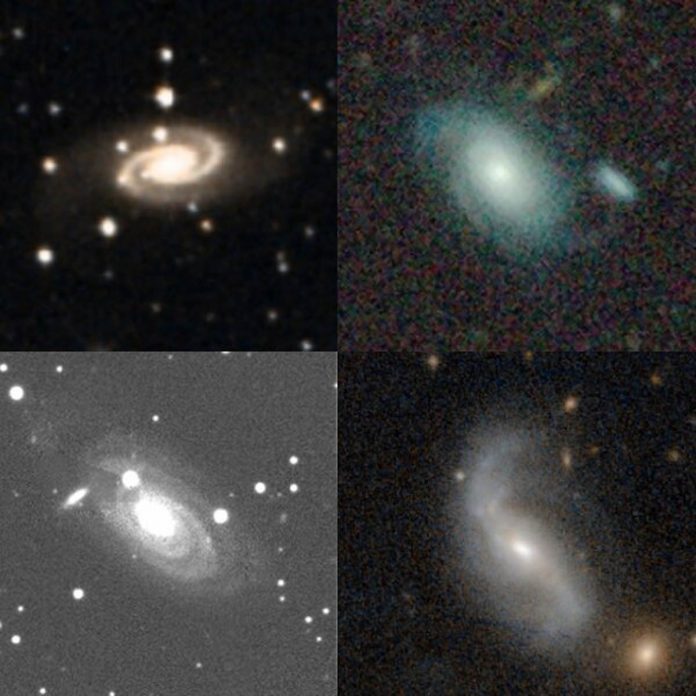Astronomers said they enjoy their work in handling enormous amounts of data to work with images of the sky. They always do not have the “hands-on” experience of looking at every square inch of the universe while they study it. Astronomers have shown us the wonders of the galaxies that only a select few people will ever have seen.
Galaxies at our fingertips
A few years ago, astronomers had totediously examine photographic plates after a long observing. But in this century, we all have access to information anytime, anywhere because of internet.
Automatic telescopes and surveys give us information and astronomers need machines to help them in analyzing it. Massive amounts of data are is available online, just waiting to be admired.

Go online to see a universe atlas
One of the greatest online tools to look at our universe is Aladin Lite. We can scan the whole sky to find out hidden galaxies. We can also decipher information about their stellar populations.
One of the most visually stunning galaxies is the Cartwheel Galaxy. In the Aladin Lite, you can search for the popular name of an object.
The first image of the Cartwheel Galaxy is from the Digitised Sky Survey. The different filters of the telescope create colours in the images. This is a representation of how the galaxy will look like when we will see it with our own eyes.
“Colour” differs within galaxies because of different environments. Blue colour indicates generally hotter things. In the galaxy, the outer ring is bluer than the centre red section. This suggests at star formation and stellar activity of the outer ring.

Examples of spiral galaxies found using Aladin online. Spirals are the most iconic galaxy shape and include many of the brightest galaxies in the nearby universe, like the Andromeda Galaxy.
We can look at data of different surveys. Vast amounts of UV radiation are emitted with the formation of a young star. From the GALEXGR6/AIS survey we look at UV wavelengths.
If the centre section seems to “disappear”, then it suggests it is likely home to older stars.
Aladin has 20 different surveys. The surveys provide images of the sky from UV, X and gamma rays.
Universal Where’s Wally
Now we can explore superb images of space and find new galaxies. DECalS/DR3 images have the highest resolution and detail.

You can find any information by selecting the target icon and clicking on the object.

